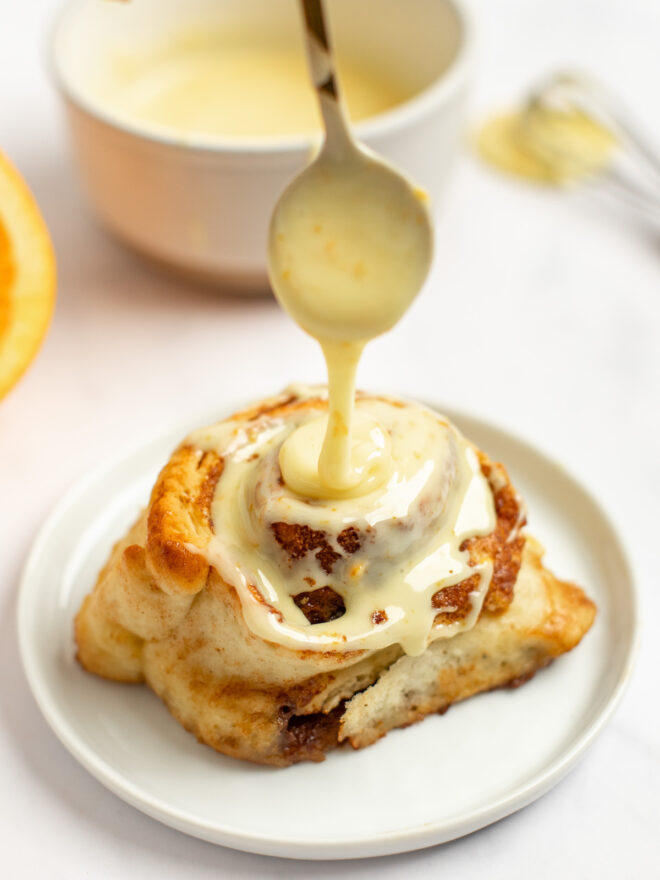
Orange glaze is nothing new. The combination of orange juice and powdered sugar strikes the most delicious balance of sweet and tangy. My orange glaze recipe touches on all those traditional orange icing notes but adds in zest for an extra orange flavor and tart bite.
I love all the drizzle-able, dip-able, spreadable sweet toppings and if you’re in the same boat, this Gorgeous Glossy 10-Min Blueberry Glaze is a must-make! If you’re on the hunt for a non-fruity option, my 5-Minute Ultra Creamy Mascarpone Frosting and Seductively Silky Chocolate Glaze in 5 Minutes never disappoint!
Why You’ll Love My Orange Glaze Recipe
So Citrusy! Orange glaze derives its citrusy flavor from the natural zest and juices of fresh oranges. The zesty oils from the orange peel infuse the glaze with citrus fragrance.
So Adaptable! This recipe can be customized with additional ingredients such as honey, ginger, or even spices like cinnamon. Keep scrolling – I’m giving you tons of ideas below! Tailor the glaze to suit your specific dishes and personal preferences.
Mouthwatering! The glaze’s vibrant color and citrusy aroma make each bite a mouthwatering moment.
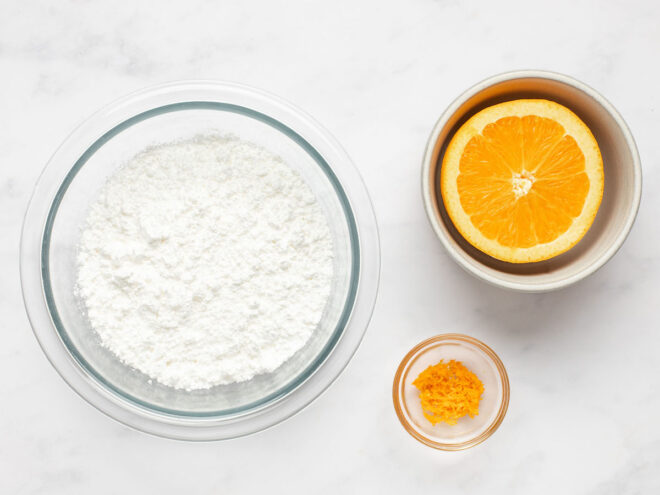
Ingredients for Orange Glaze
Orange Juice. Orange juice provides the necessary liquid base for the glaze enabling it to be drizzled smoothly over desserts, cakes, and more! The juice gives the glaze its authentic sweet and tangy orange flavor, making it vibrant and refreshing.
Orange Zest. The orange zest, which is the outer peel of the orange, contains essential oils. These oils are highly aromatic and contain concentrated citrus flavors. When added to the glaze, the zest infuses it with a citrusy aroma adding depth and complexity to the glaze.
Powdered Sugar. Powdered sugar, also known as confectioners’ sugar or icing sugar, is finely ground and has a silky texture. It dissolves easily, creating a smooth and velvety consistency. This smoothness is crucial for a glaze, as it ensures an even coating over pastries, cakes, or other baked goods. By adjusting the amount of powdered sugar, the thickness of the glaze can be controlled.
How to Make Orange Glaze
Prepare the Orange Zest:
Wash the oranges thoroughly to remove any dirt or wax from the peel. Use a fine grater or a citrus zester to grate the orange peel gently. Be cautious not to grate the bitter white pith beneath the zest, as it can add bitterness to the glaze.
Squeeze Fresh Orange Juice:
Cut the oranges in half and juice them using a citrus juicer or a reamer. Strain the juice through a fine mesh sieve to remove pulp and seeds.
Combine Ingredients:
In a mixing bowl, combine the powdered sugar, fresh orange juice, and grated orange zest. Whisk the ingredients together until the mixture is smooth and all the sugar is dissolved.
If the glaze seems too thick, you can add a little more orange juice, a teaspoon at a time, until you reach your desired consistency. If the glaze is too thin, add a bit more powdered sugar and whisk until well incorporated.
Drizzle away!
Use the orange glaze immediately by drizzling it over cakes, muffins, or other desserts.
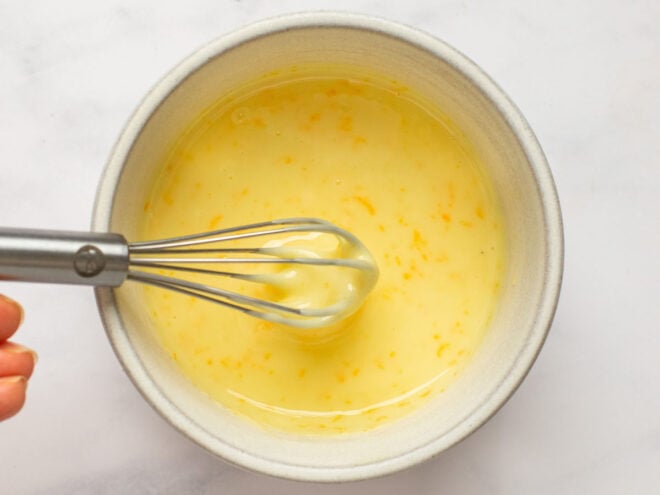
Tips for Success
Start with Less Liquid.
When adding orange juice to the powdered sugar, start with a smaller amount. You can always add more juice to thin out the glaze if needed. Adding too much liquid at once can make the glaze overly thin and difficult to control.
Zest Wisely.
When grating the orange zest, be cautious not to include the bitter white pith beneath the peel. The pith can add bitterness to the glaze, so zest only the outer, colorful part of the peel. A microplane zester or a fine grater can help you get just the flavorful zest without the bitterness.
Fresh Oranges.
Whenever possible, use freshly squeezed orange juice. The natural sweetness and vibrant citrus flavor of fresh oranges significantly enhance the glaze’s taste. Bottled or pre-packaged orange juice might lack the same freshness and depth of flavor.
Sift your powdered sugar.
Avoid lumpy glaze by pre-sifting your powdered sugar to make sure there are no lumps or bumps in your icing!
Whisk Thoroughly.
Take your time when whisking the glaze to ensure the powdered sugar fully dissolves. Whisk until there are no lumps, and the glaze becomes smooth and glossy. A few extra minutes of whisking can make a significant difference in the final texture of the glaze.
How to Store Leftover Glaze
Airtight Container. Transfer the orange glaze to an airtight container. Ensure the container has a tight-sealing lid to prevent air from getting in, which can cause the glaze to dry out or develop an off-flavor.
Refrigeration. Store the airtight container with the orange glaze in the refrigerator. Always refrigerate any glaze that contains fresh juice to maintain its quality.
Avoid Freezing. While some glazes can be frozen, citrus-based glazes, like orange glaze, may not freeze well due to their water content. Freezing can cause the glaze to separate and lose its smooth texture. It’s best to consume or use the glaze within a few days to a week of making it.
Reheating (if needed). If the glaze becomes too thick after refrigeration, you can gently reheat it in a microwave-safe container in short intervals, stirring in between, until it reaches the desired consistency. Be cautious not to overheat, as it can cause the glaze to break or become too thin.
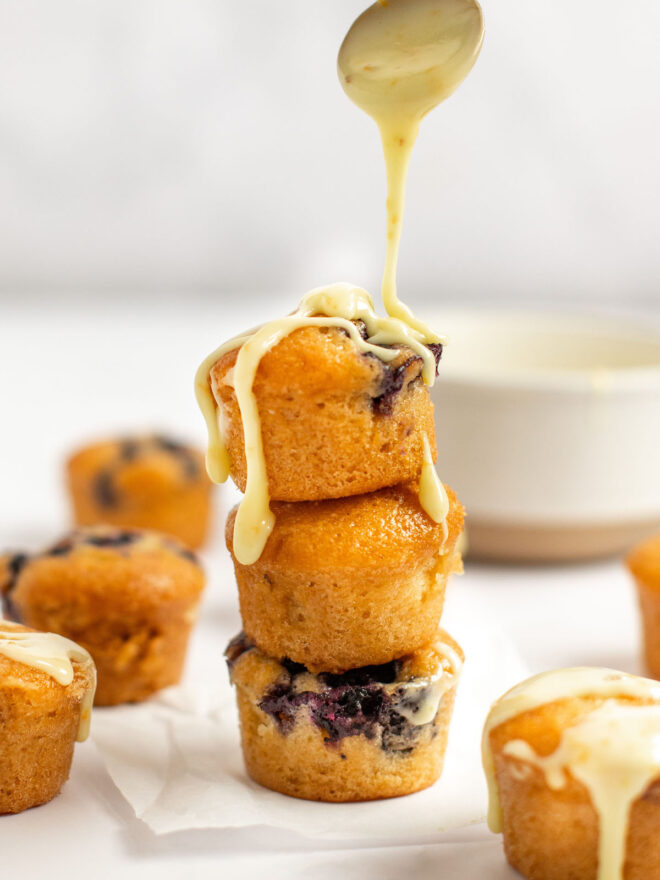
Variations to Try
Orange Honey Glaze
Combine orange juice, orange zest, powdered sugar, and a few tablespoons of honey. The addition of honey adds a natural sweetness and depth of flavor to the glaze, enhancing its richness.
Orange Ginger Glaze
Mix orange juice, orange zest, powdered sugar, and a teaspoon of freshly grated ginger. The ginger provides a subtle heat and aromatic spice, creating a unique and zesty glaze.
Spiced Orange Glaze
Add a pinch of ground cinnamon, nutmeg, or cloves to your basic orange glaze recipe. These warm spices complement the citrusy flavor and add a delightful, comforting aroma to the glaze.
Maple Orange Glaze
Mix orange juice, orange zest, powdered sugar, and a few tablespoons of pure maple syrup. The maple syrup adds a rich, caramel-like sweetness, complementing the citrus notes beautifully.
Vanilla Orange Glaze
Add a teaspoon of pure vanilla extract or the seeds scraped from a vanilla bean to your orange glaze. The subtle vanilla flavor enhances the sweetness of the glaze and adds depth to the overall taste.
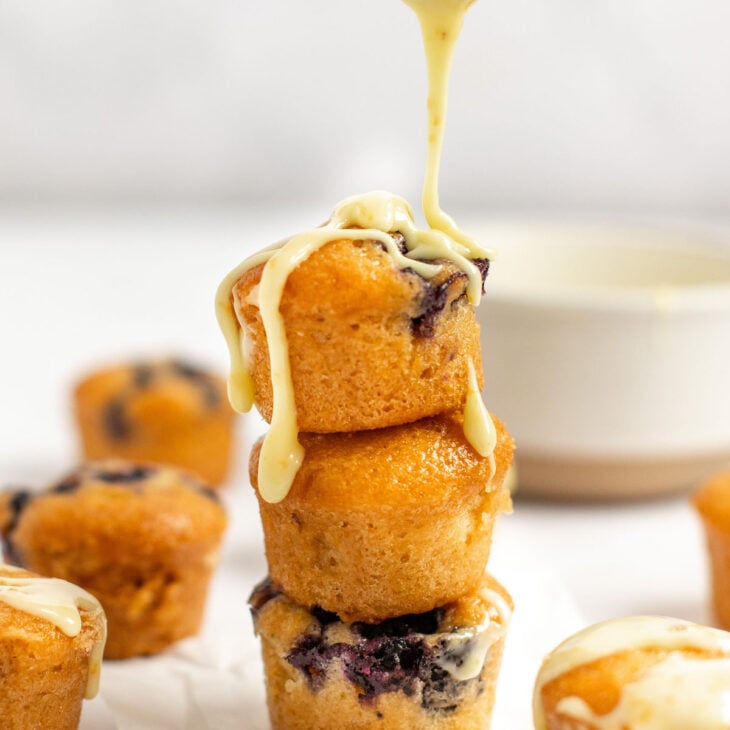 Recipe
Recipe
Zesty 5-Minute Orange Glaze
You’ll want to slather this orange glaze on everything! My recipe is made in just 5-minutes with orange zest to bump up the orange flavor!
Ingredients
- 1/4 cup fresh orange
- 1 1/3 cups powdered sugar
- 1 tablespoon orange zest
Instructions
- Prepare the Orange Zest: Wash the oranges thoroughly to remove any dirt or wax from the peel. Use a fine grater or a citrus zester to grate the orange peel gently. Be cautious not to grate the bitter white pith beneath the zest, as it can add bitterness to the glaze.
- Squeeze Fresh Orange Juice: Cut the oranges in half and juice them using a citrus juicer or a reamer. Strain the juice through a fine mesh sieve to remove pulp and seeds.
- Combine Ingredients: In a mixing bowl, combine the powdered sugar, fresh orange juice, and grated orange zest. Whisk the ingredients together until the mixture is smooth and all the sugar is dissolved.
- If the glaze seems too thick, you can add a little more orange juice, a teaspoon at a time, until you reach your desired consistency. If the glaze is too thin, add a bit more powdered sugar and whisk until well incorporated.
- Drizzle away! Use the orange glaze immediately by drizzling it over cakes, muffins, or other desserts.
Nutrition Info:
- Serving Size: 2 tablespoons
- Calories: 81
- Sugar: 20.1g
- Sodium: 0mg
- Fat: 0g
- Saturated Fat: 0g
- Unsaturated Fat: 0g
- Trans Fat: 0g
- Carbohydrates: 20.6g
- Fiber: 0.2g
- Protein: 0.1g
- Cholesterol: 0mg
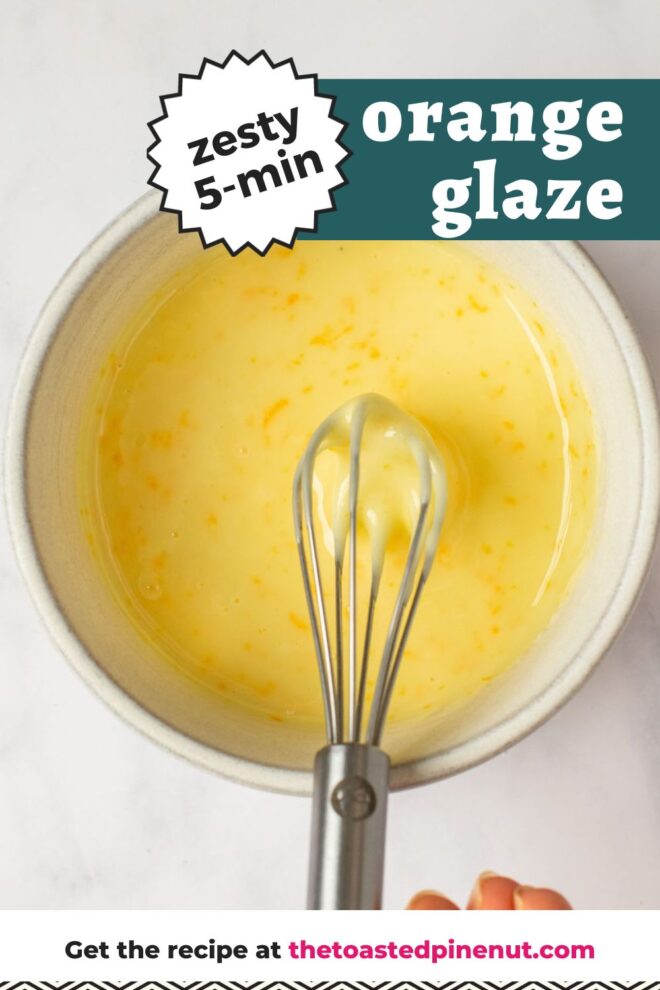
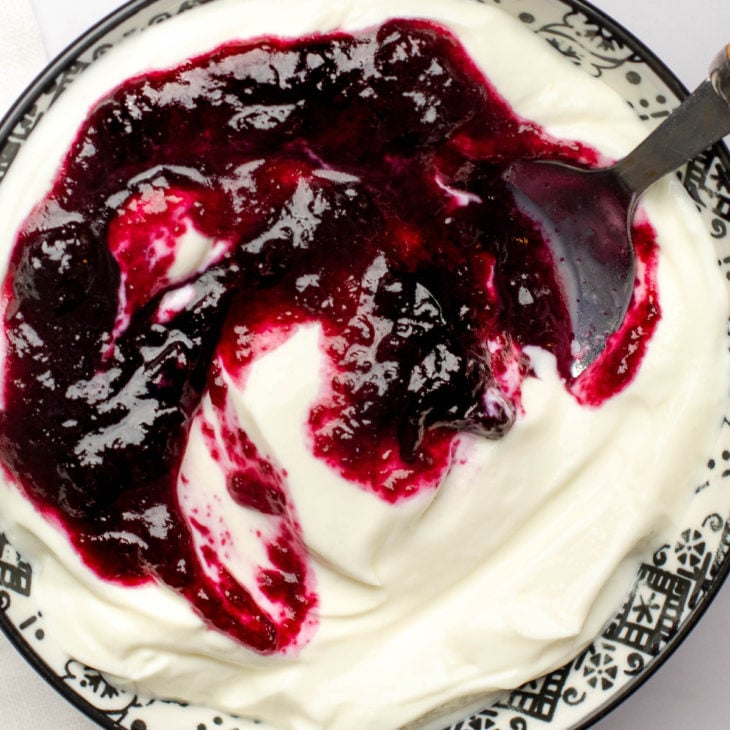
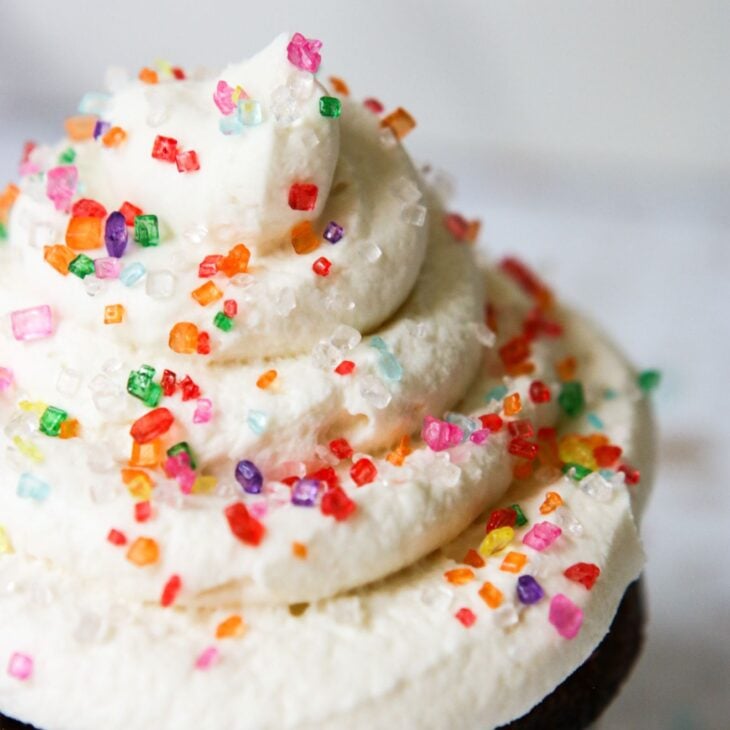
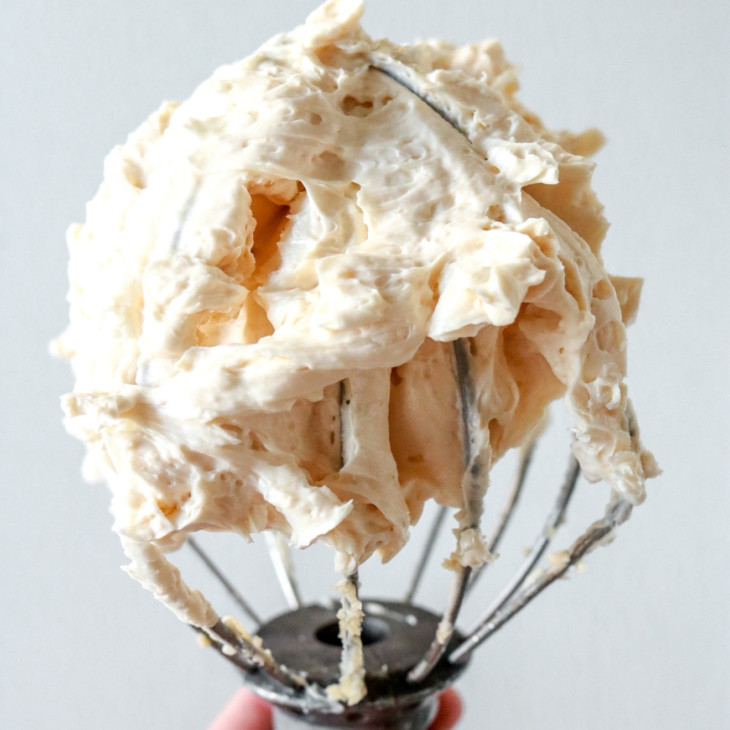
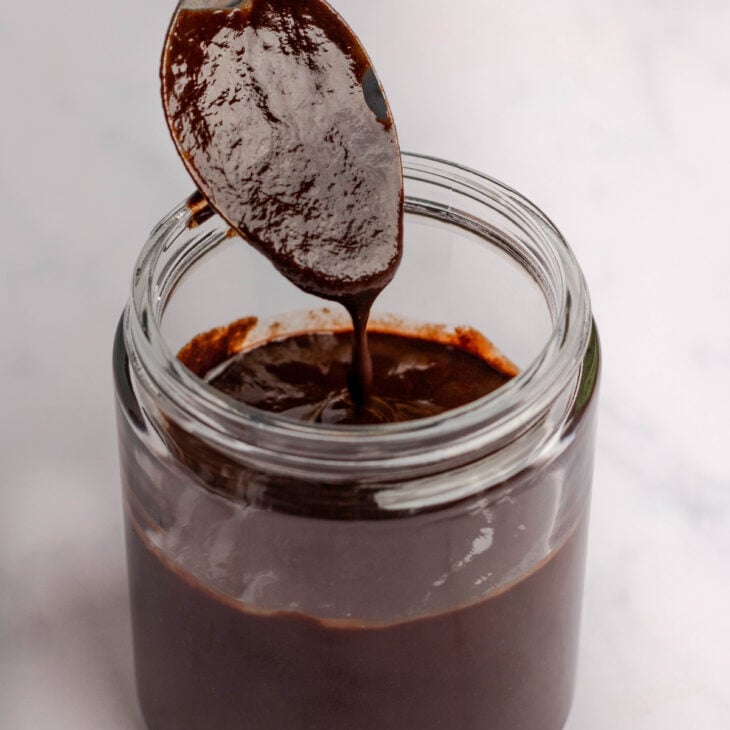
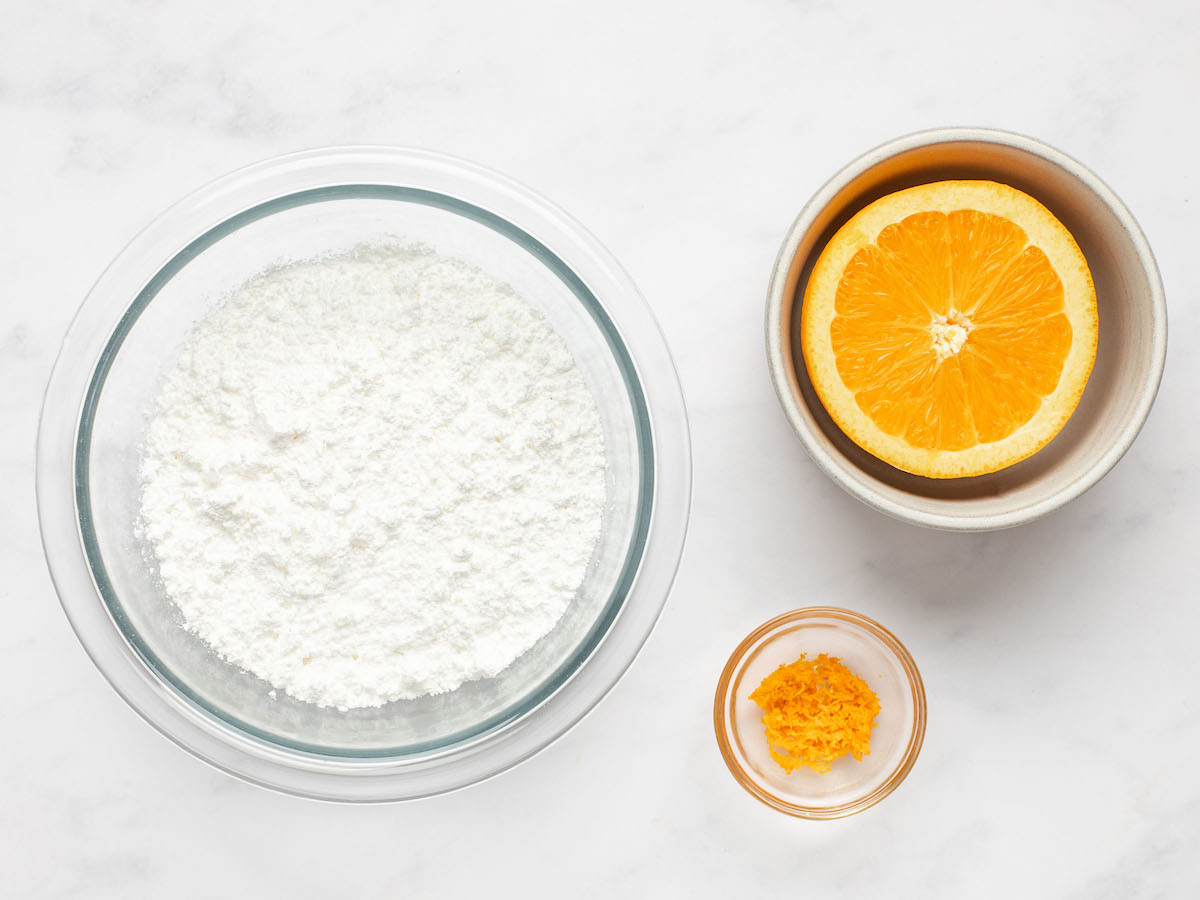
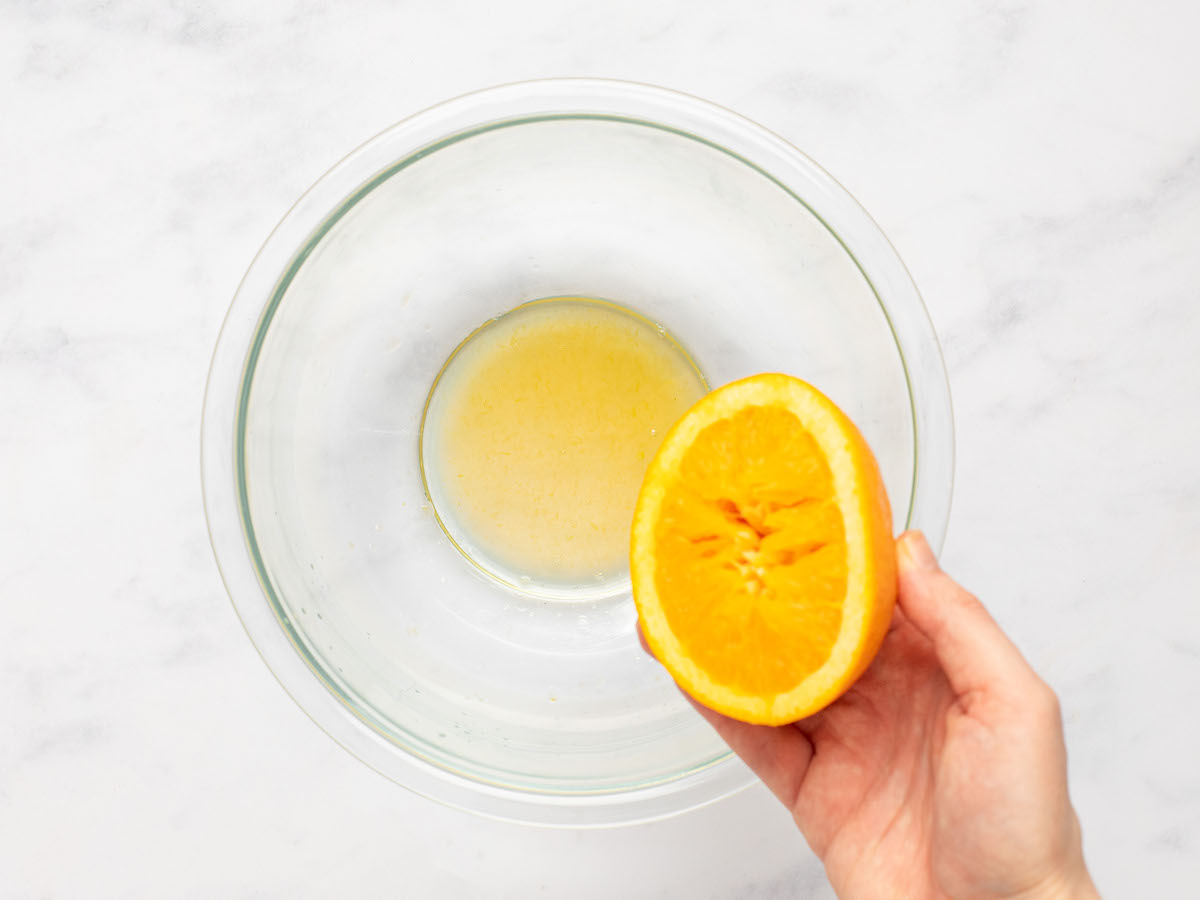
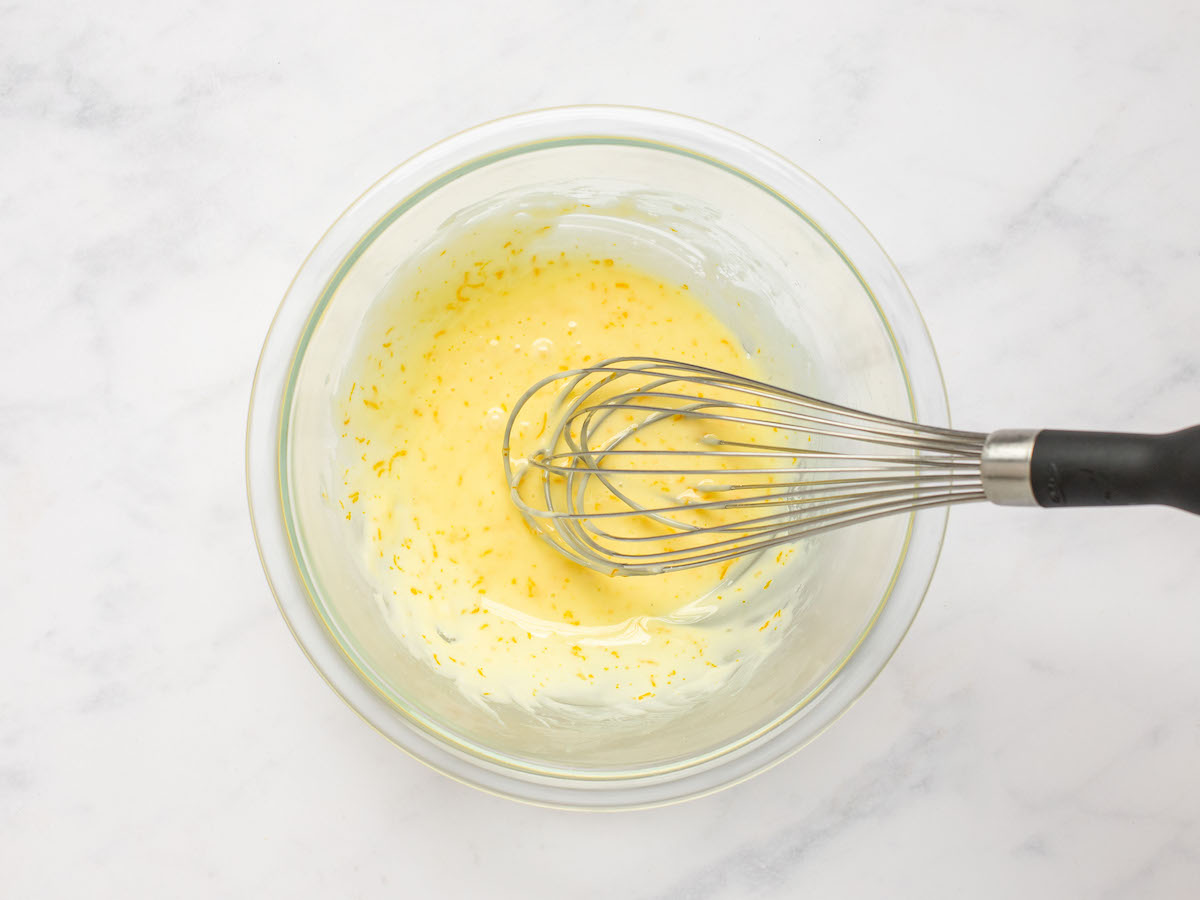
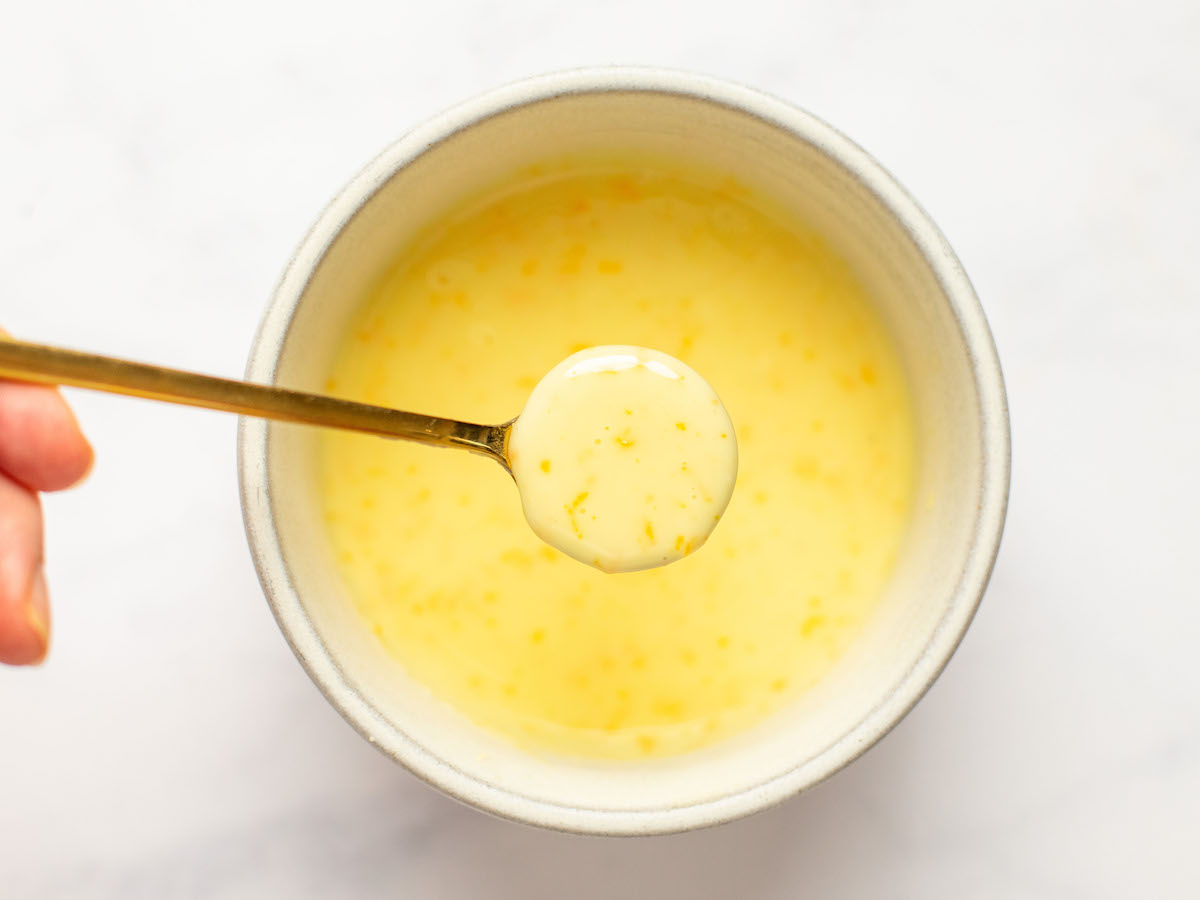
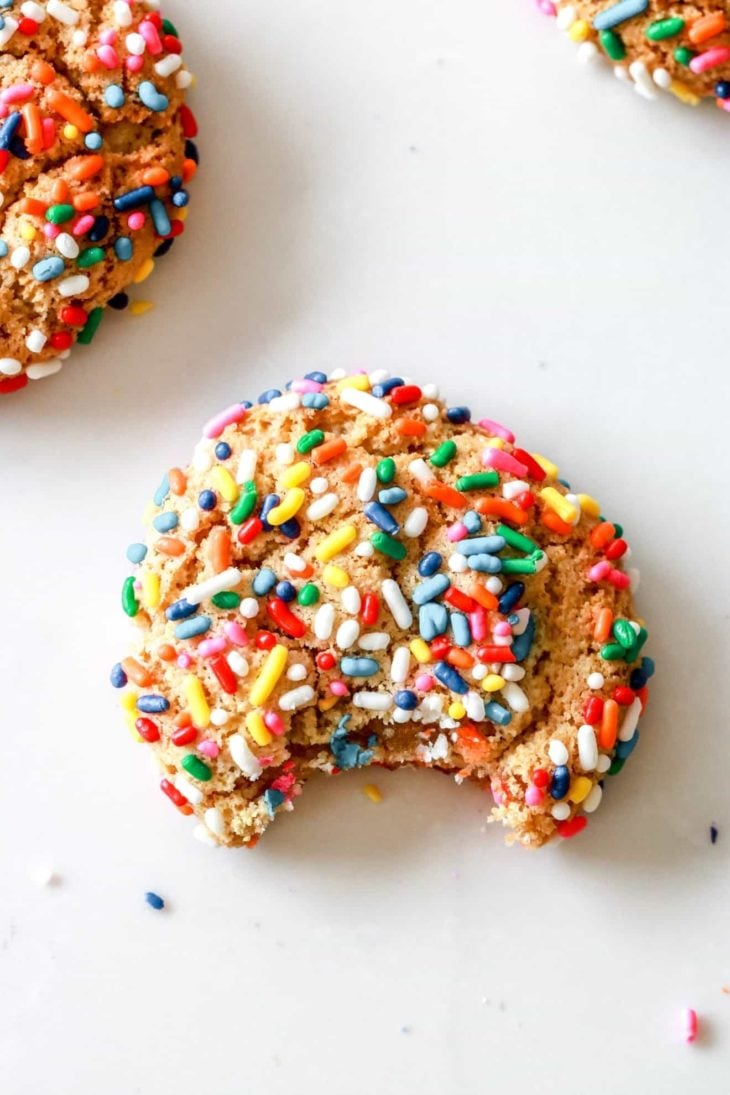
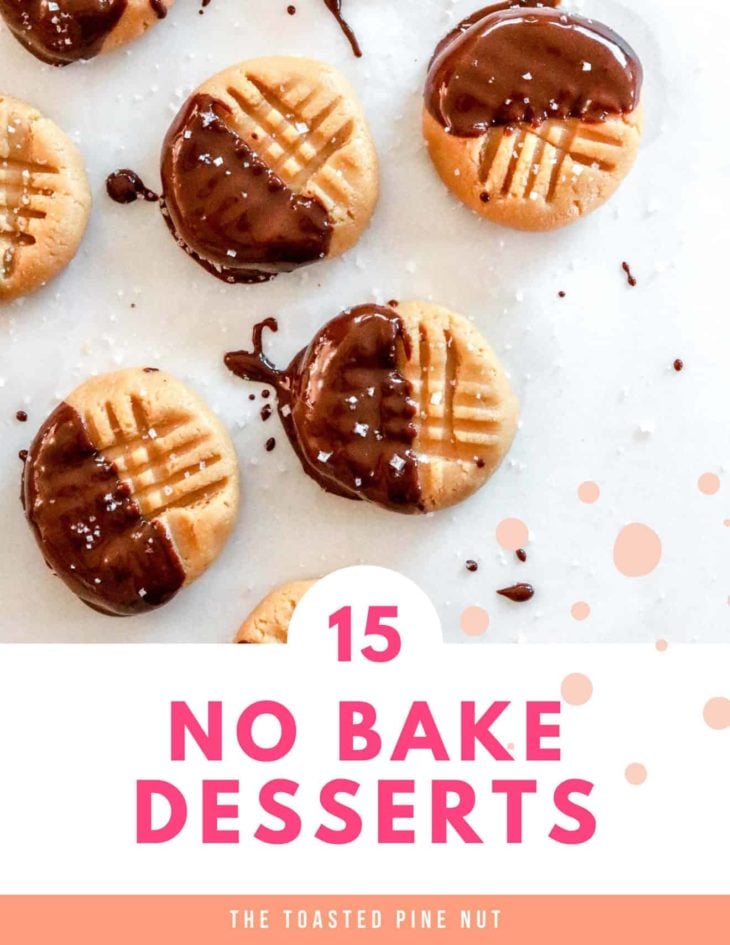
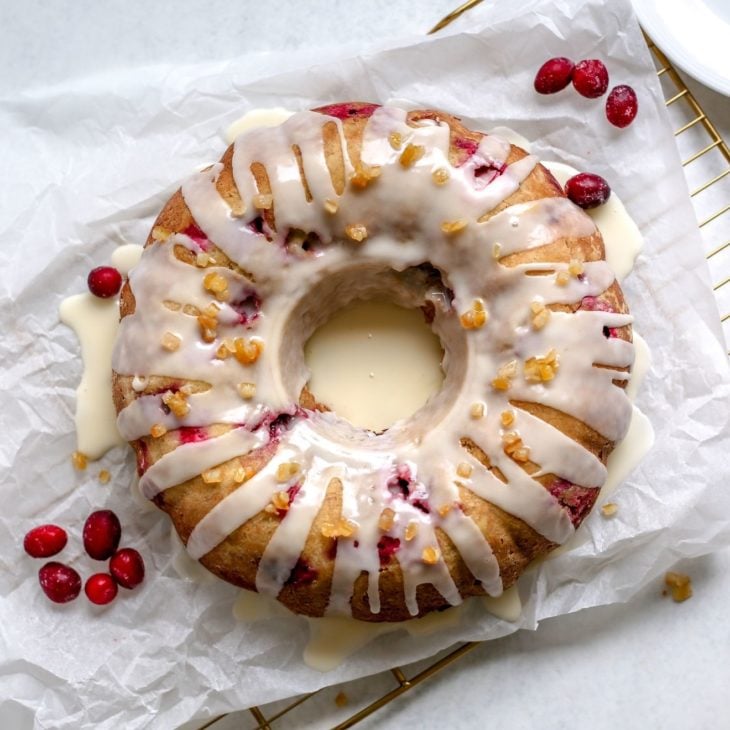
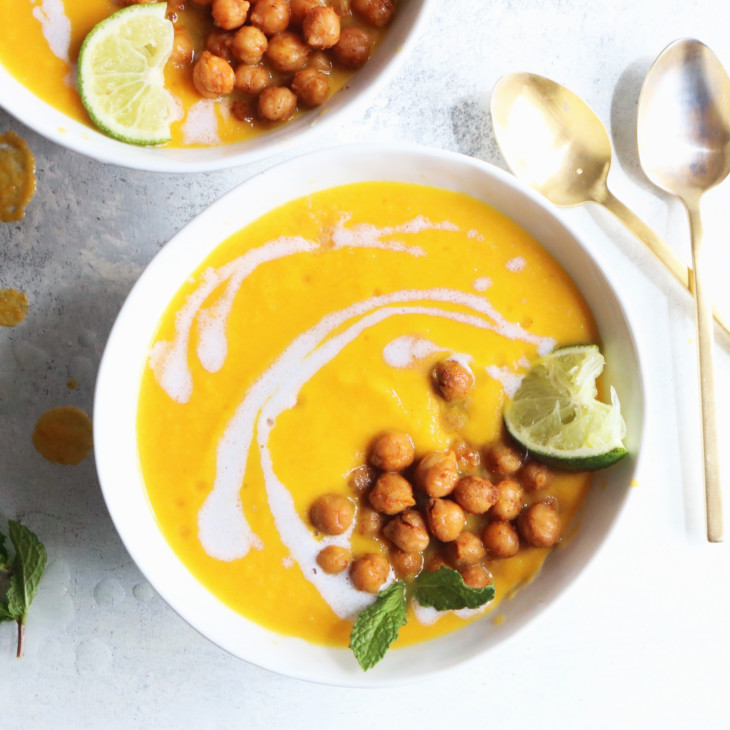
Leave a Comment & Rate this Recipe